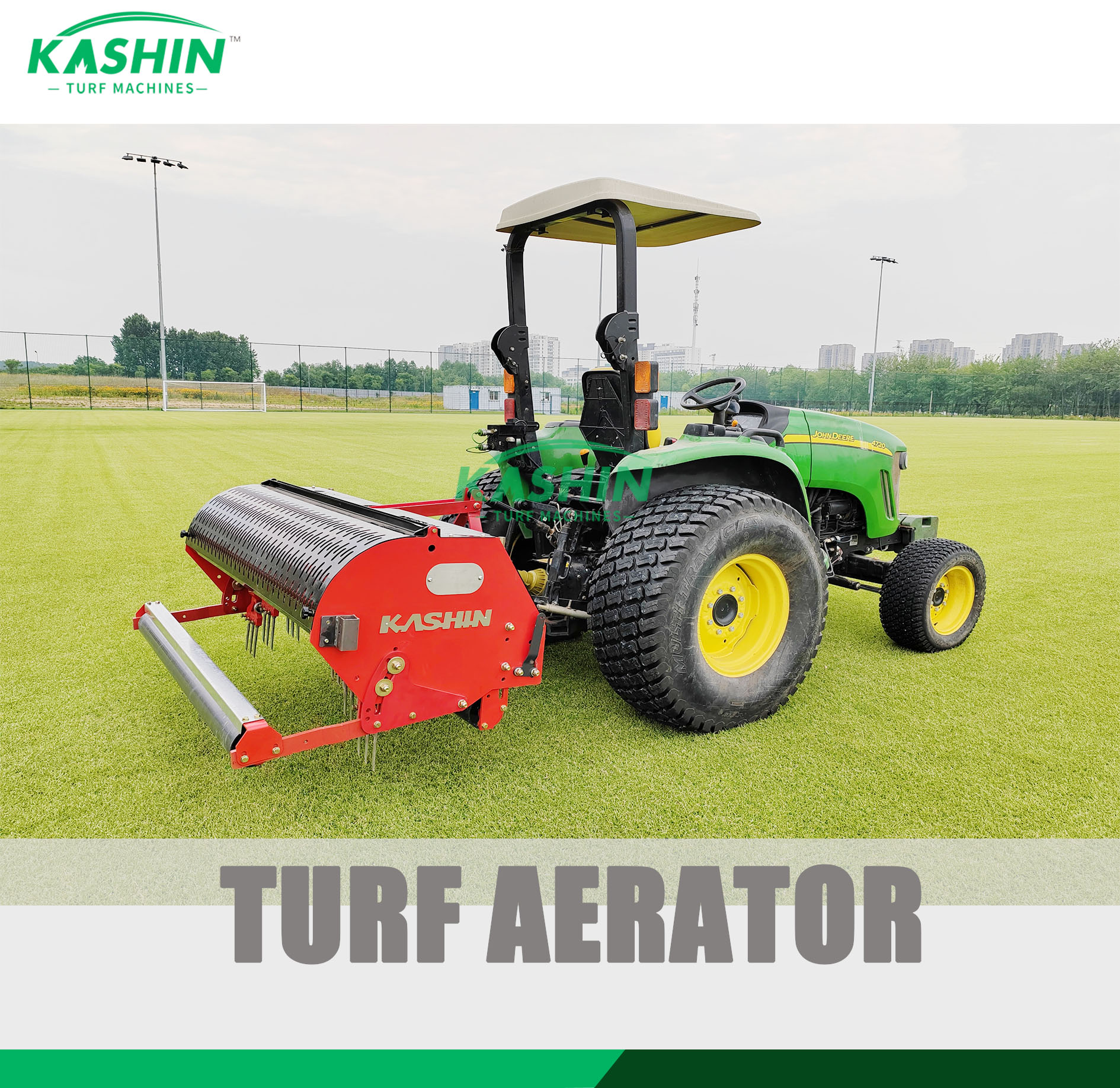After the tall lawn is established, in addition to fertilizing, watering, and turfing the lawn, holes also need to be drilled in a timely manner. Drilling holes is a very important task in terms of the growth of turfgrass and the use function of turfgrass. Drilling is a method of punching soil rolls from the lawn in the remaining period by selecting an appropriate china aerator machine, improving the physical properties and other characteristics of the lawn, accelerating the stratification of the lawn pruning layer, and promoting the growth of the above-ground and underground parts of the lawn. Cultivation measures.
There are many holes punched, and commonly used circular motion punchers and vertical motion punchers are commonly used. The vertical motion mechanical hole punch has hollow tines, which is less destructive to the lawn surface, has a large drilling depth of 8 to 10 cm, and has both longitudinal and vertical drilling methods. The advantages of the wave-shaped motion punching machine with open shovel-type hollow tines are fast working speed, less damage to the lawn surface, and the drilling depth is shallower than that of the vertical motion drilling machine.
Depending on the size of the tines and trowels of these two drilling machines, the diameter of the soil rolls produced varies by about 6 to 8 mm. The vertical height of the soil rolls also depends on the compactness of the soil, soil bulk density and moisture content, and the drilling machine. The penetration ability varies. Generally, the firmer the soil, the greater the soil capacity, the smaller the water content, and the deeper the hole must be drilled. The greater the puncture capacity of the punch, the deeper the hole will be made. The main function of drilling holes is to improve soil permeability. After the soil roll was drilled, although the soil permeability between the holes, below the holes, around the holes, and at the bottom of the holes was not improved, some small holes were left on the soil surface, which increased the roughness of the soil and increased the The soil surface area is significantly improved, so the air and water permeability of the soil are significantly improved.
Drilling holes helps the soil release harmful gases, improves the wetting characteristics of the soil or hydrophobic soil, accelerates the drying of long-term wet soil, improves the penetration capacity of soil with a tight surface or an excessively thick branch layer, and promotes the penetration of soil into the hole after drilling. The root system grows, improves the cation exchange capacity of the soil, improves the soil’s retention of nutrients and water, and accelerates the decomposition rate of organic residues. For very compact lawn soil, drilling can improve growing conditions near the hole as long as moisture is not restricted. If repeated drilling is done over several consecutive years, the overall lawn growing conditions will improve.
The adverse effect of drilling operations is that it temporarily destroys the integrity of the turf surface and causes local dehydration of the turfgrass due to the exposure of the turf soil layer. When conditions are suitable for weed seeds to germinate, some weeds will be produced, accelerating the damage caused by cutworms and other pests.
The time of drilling is very important. Drilling in the middle of summer, during the dry and hot daytime, will cause serious dehydration in parts of the stoloniferous bentgrass lawn. Therefore, it is more appropriate to drill holes when the lawn is flourishing and growing conditions are good. Drilling should not only pay attention to time, but also work closely with other measures. For example, surface fertilization and irrigation immediately after drilling can effectively prevent turf grass from dehydrating and improve the utilization rate of fertilizer by the roots.
Post time: Jul-09-2024

